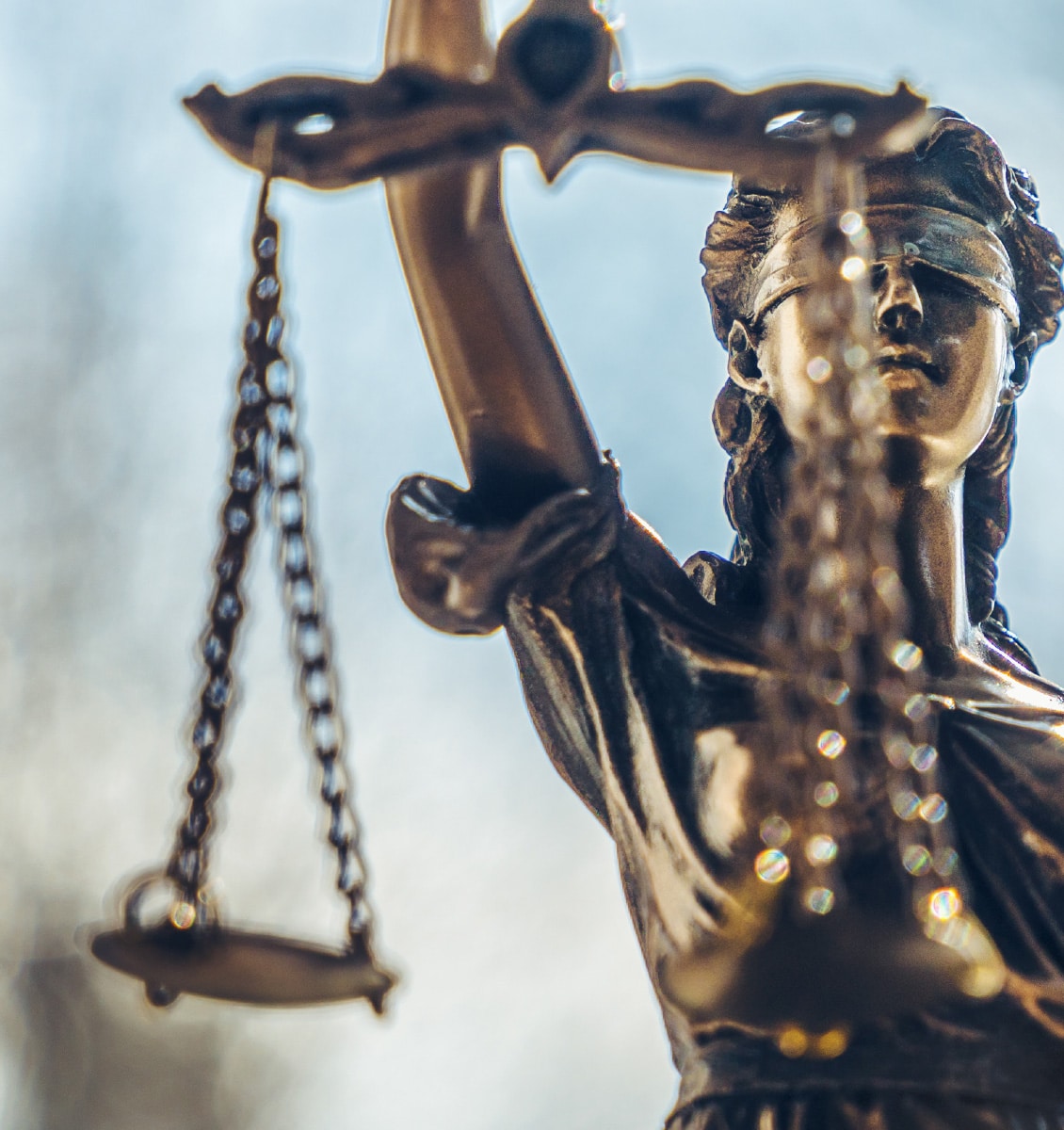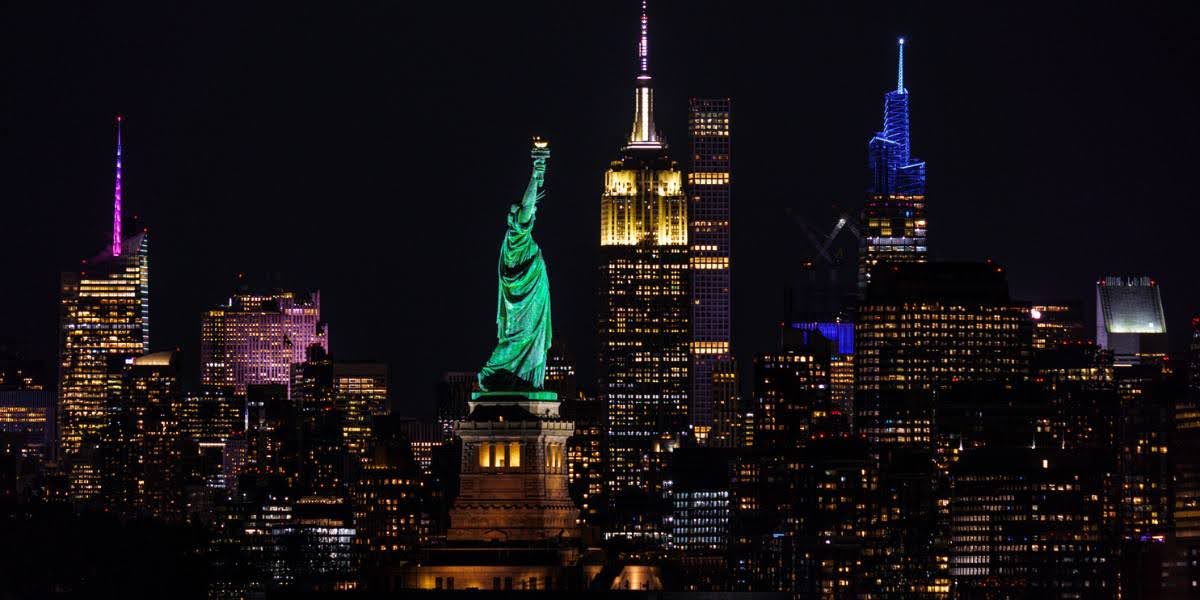Family conflicts can sometimes escalate into situations where one person needs legal protection from another. That’s where a protective order comes in. Whether you’re dealing with threats, harassment, or domestic violence, a protective order can help create a legal boundary to keep you safe.
But what exactly is a protective order, and how does it work? In this guide, we’ll break down everything you need to know—what a protective order is, the different types, how to get one, and what happens if someone violates it. If you need help with family law matters in New York or New Jersey, the experienced attorneys at Krasner Law can provide guidance and support.
What Is a Protective Order? A Complete Guide to Legal Protection
When personal relationships become dangerous, the legal system provides protective measures to help ensure safety. What is a protective order? A protective order, also known as a restraining order, is a legally binding court order that restricts or prohibits contact between individuals to prevent harm. These orders are commonly used in cases involving domestic violence, harassment, stalking, or threats, and they establish clear legal boundaries that, if violated, can lead to criminal charges.
Protective orders can be an important tool for victims of abuse or individuals facing persistent threats, helping to create a safe environment and prevent further harm. If you are in a situation where you feel unsafe, understanding what a protective order is and how it works can help you take the right steps toward securing legal protection.
What Does a Protective Order Do?
The primary purpose of a protective order is to create a legal barrier between the petitioner (the person seeking protection) and the respondent (the person the order is filed against). Depending on the specific case, a protective order can include a variety of restrictions:
1. Prohibiting Contact
- The respondent may be forbidden from calling, texting, emailing, or using social media to contact the petitioner.
- Indirect contact, such as using a third party to communicate, may also be prohibited.
2. Establishing Physical Distance
- The respondent may be required to stay a certain number of feet or yards away from the petitioner’s home, workplace, school, or other important locations.
- In New York, for example, protective orders often specify a distance of 100 to 300 feet depending on the circumstances.
3. Restricting Custody or Visitation
- If the petitioner and respondent share children, the protective order may modify custody or visitation rights to ensure the children’s safety.
- The court may grant supervised visitation or temporarily deny visitation altogether.
4. Removing Firearms or Weapons
- In cases where there is a risk of violence, courts can order the respondent to surrender firearms.
- Under New York’s Red Flag Law (Extreme Risk Protection Order Act), courts can issue an Extreme Risk Protection Order (ERPO), temporarily preventing someone from purchasing or possessing a firearm if they are considered a threat.
5. Providing Financial Support
- If the petitioner and respondent were in a marital or cohabitating relationship, the court may order the respondent to continue financial support such as spousal or child support.
Because protective orders are legally enforceable, violating one can result in arrest, fines, or jail time. The severity of the penalties depends on state laws and the nature of the violation.
Who Can Get a Protective Order?
Protective orders are available to individuals who feel threatened, harassed, or in danger due to the actions of another person. While they are most commonly used in domestic violence cases, they can also be issued for other dangerous situations.
Common Reasons for Seeking a Protective Order:
- Domestic Violence – Physical abuse, threats, or controlling behavior from a spouse, ex-spouse, partner, or family member.
- Stalking or Harassment – Repeated unwanted contact, following, or intimidation that creates fear.
- Sexual Assault – Protection for victims of sexual violence against their abuser.
- Threats of Harm – If someone has made credible threats against you, a protective order can help prevent further escalation.
Who Can File for a Protective Order in New York and New Jersey?
In New York, protective orders are available through both Family Court and Criminal Court:
- Family Court issues protective orders in cases involving family members, spouses, ex-spouses, co-parents, or intimate partners (past or present).
- Criminal Court can issue protective orders when the respondent is charged with a crime involving harm, threats, or harassment.
In New Jersey, protective orders are available through the Superior Court (Family Part), and individuals can file for one if they are victims of domestic violence, harassment, or stalking.
Types of Protective Orders: Understanding Your Legal Options
Not all protective orders are the same. The type of order you need depends on your situation, the level of risk involved, and the relationship between the people involved. If you’re dealing with domestic violence, harassment, stalking, or threats, knowing the differences between temporary, final, emergency, and criminal protective orders can help you take the right steps to protect yourself or someone you care about.
In New York and New Jersey, protective orders can be issued through family court (for personal and domestic issues) or criminal court (when criminal charges are involved). Below, we’ll break down each type of protective order, how they work, and what to expect if you need one.
1. Temporary Protective Order (TPO)
A temporary protective order (TPO) is a short-term order that provides immediate protection while you wait for a full court hearing. These orders are often issued quickly if a judge believes you are in danger and need legal protection right away.
Who Can Get a Temporary Protective Order?
Anyone who feels threatened, harassed, or in danger can request a temporary protective order. This is common in cases of domestic violence, stalking, harassment, or abusive relationships.
How Long Does It Last?
A temporary protective order usually lasts until the court hearing, which is typically scheduled within a few weeks. At the hearing, the judge will decide whether to extend the order into a final protective order.
What Happens Next?
Once a TPO is granted, the person you are seeking protection from (called the respondent) will be officially notified. They must follow the restrictions in the order, or they could face legal consequences, including arrest and criminal charges.
If you still feel unsafe by the time your court date arrives, you’ll need to present evidence and explain your case to the judge. If the judge agrees that long-term protection is necessary, they may grant a final protective order.
2. Final Protective Order (FPO)
A final protective order (FPO) provides long-term protection for individuals who need it. These are issued after a court hearing, where both sides present their case, and a judge makes a decision based on the evidence.
How Is It Different from a Temporary Order?
Unlike a temporary protective order, which is issued quickly and without a full hearing, a final protective order is only granted after both parties have a chance to speak in court.
How Long Does It Last?
The length of an FPO varies. Some orders last a year or more, while others remain in place indefinitely. It depends on the details of the case and the judge’s decision.
What Can It Do?
A final protective order may include:
- Restricting all contact between the respondent and the petitioner
- Setting physical distance requirements (e.g., staying away from the petitioner’s home, workplace, or school)
- Determining custody and visitation in cases involving children
- Requiring the surrender of firearms if the respondent owns weapons
- Ordering financial support in cases where the individuals have shared responsibilities
If an FPO is violated, the respondent could face serious legal consequences, including arrest, fines, and possible jail time.
3. Emergency Protective Order (EPO)
An emergency protective order (EPO) is a very short-term order granted when someone is in immediate danger and needs protection fast.
How Is It Issued?
Law enforcement officers can request an EPO on behalf of a victim—this is especially common in domestic violence cases. If police respond to an incident and believe someone is at risk of further harm, they can ask a judge to issue an emergency protective order right away.
How Long Does It Last?
An EPO usually lasts only a few days—just enough time for the victim to go to court and request a temporary or final protective order.
What Can It Do?
An emergency protective order may:
- Order the abuser to leave the home immediately
- Prohibit contact between the victim and the abuser
- Require law enforcement to confiscate firearms if necessary
If someone is facing an immediate threat of violence, calling the police and requesting an EPO can be a lifesaving decision.
4. Criminal Protective Order (CPO)
A criminal protective order (CPO) is issued when criminal charges are involved. If someone has been arrested or charged with a crime like assault, harassment, or stalking, the court may issue a CPO to protect the victim.
When Is It Issued?
A CPO is typically issued during a criminal case to ensure the defendant does not harass, threaten, or harm the victim while the case is ongoing.
How Long Does It Last?
Criminal protective orders can last for the duration of the criminal case and may extend even after the trial ends. If the defendant is convicted, the order may be extended for additional months or years.
What Happens If a Criminal Protective Order Is Violated?
Violating a CPO is taken very seriously. Since it is tied to a criminal case, any violation could result in additional criminal charges, jail time, or harsher penalties.
5. Family Court vs. Criminal Court Protective Orders
Protective orders can come from two different courts—family court and criminal court. The process and rules for each are slightly different.
Family Court Protective Orders
- Used for cases involving domestic violence, child custody disputes, and harassment
- The petitioner must file a request for protection
- The process involves hearings where both sides present their case
- If granted, the order can restrict contact, adjust custody rights, and provide financial support
Criminal Court Protective Orders
- Issued when the respondent is facing criminal charges (like assault or harassment)
- Can be issued without the victim filing for protection
- A judge may grant the order to prevent the accused from contacting the victim during legal proceedings
- If violated, the respondent could face additional criminal charges
If you are unsure whether to file for a protective order in family court or criminal court, consulting an attorney can help you determine the best course of action.
How to Get a Protective Order
If you need a protective order, the process is fairly straightforward, but having a lawyer can make it easier. Here’s how it typically works in New York and New Jersey:
1. File a Request
You’ll need to go to Family Court (for domestic matters) or Criminal Court (if charges are involved) and file a petition for a protective order.
2. Provide Evidence
To support your request, you’ll need to present evidence, such as:
- Police reports
- Medical records
- Threatening messages (texts, emails, voicemails)
- Photos of injuries or property damage
- Witness statements
3. Get a Temporary Order (If Needed)
If the judge believes you’re in immediate danger, they may issue a temporary protective order on the spot.
4. Attend a Court Hearing
A hearing will be scheduled, where both you and the other party will have the chance to present your side. It’s highly recommended to have a family law attorney represent you to make sure your rights are protected.
5. Judge’s Decision
If the judge agrees that protection is necessary, they will issue a final protective order with specific rules that must be followed.
What Happens If Someone Violates a Protective Order?
A protective order is a legally binding directive issued by the court, which means violating it is a serious offense. If the person named in the order—also known as the respondent—does not follow its terms, they can face criminal charges, fines, and even jail time.
Protective orders are designed to provide security and peace of mind for individuals experiencing harassment, threats, or abuse. However, when a respondent chooses to ignore the restrictions, it can place the petitioner’s safety at risk. Fortunately, there are legal consequences in place to enforce these orders and ensure compliance.
If you have a protective order and the respondent is not following it, it is crucial to report the violation immediately and seek legal assistance. Below, we’ll go over what happens when someone violates a protective order, what penalties they may face, and what steps you can take to ensure your protection.
What Counts as a Violation of a Protective Order?
A violation occurs when the respondent does not comply with the terms set by the protective order. The specific restrictions vary based on the details of the case, but common violations include:
- Contacting the protected person – This includes phone calls, text messages, emails, social media interactions, or indirect messages through a third party.
- Coming too close – Many protective orders require the respondent to maintain a certain distance (e.g., 100 yards) from the petitioner’s home, workplace, school, or other designated locations.
- Threatening, stalking, or harassing – Even if no physical contact occurs, continued threats, intimidation, or following the petitioner can violate the order.
- Entering a restricted area – If the order prohibits the respondent from entering a specific location (such as the petitioner’s home), being in that area—even if no interaction occurs—can be considered a violation.
- Refusing to surrender firearms – In states like New York and New Jersey, certain protective orders require respondents to turn in their firearms. If they fail to do so, it’s a serious offense.
- Disobeying child custody or visitation restrictions – If the order includes custody limitations, violating those terms—such as taking a child without permission—can result in criminal penalties.
It’s important to remember that violating a protective order is a crime, regardless of whether the respondent believes the order is fair or necessary. If they break any of the conditions, they can be arrested and charged.
Legal Consequences of Violating a Protective Order
1. Immediate Arrest and Criminal Charges
Under New York and New Jersey law, law enforcement officers have the authority to arrest someone immediately if they have reason to believe a protective order has been violated. In many cases, police do not need a warrant—the violation itself is enough cause for arrest.
- New York Law: Under New York Penal Law § 215.50, violating a protective order is considered criminal contempt, which can result in misdemeanor or felony charges depending on the severity of the violation.
- New Jersey Law: Under the New Jersey Prevention of Domestic Violence Act (N.J.S.A. 2C:25-30), violating a restraining order is a criminal offense and typically results in mandatory arrest.
If the violation involves physical violence, stalking, or repeated offenses, the respondent may face more serious felony charges with harsher penalties.
2. Fines and Financial Penalties
Violating a protective order can lead to court-imposed fines and legal fees. The amount varies depending on the severity of the violation, prior offenses, and state laws.
- In New York, fines for violating a protective order can range from hundreds to thousands of dollars, depending on the specific circumstances of the case.
- In New Jersey, judges can impose substantial fines on top of any criminal penalties the respondent faces.
3. Jail Time or Probation
Repeated or serious violations of a protective order can result in jail time or probation.
- Misdemeanor violations (such as a first-time offense with no physical harm) can result in up to one year in jail.
- Felony violations (such as repeated offenses, threats with weapons, or physical violence) can lead to multiple years in prison.
Even if the respondent avoids jail time, they may be placed on probation, which requires them to comply with strict conditions set by the court.
4. Extension or Modification of the Protective Order
If the respondent violates a protective order, the court may extend the length of the order or add stricter conditions. This may include:
- Increasing the no-contact distance (e.g., requiring the respondent to stay farther away from the petitioner)
- Extending the duration of the order (e.g., from one year to five years or longer)
- Limiting child custody or visitation rights
- Adding new restrictions (e.g., electronic monitoring or mandatory counseling)
If a protective order violation is reported, the judge will often take further steps to ensure the petitioner’s safety.
What Should You Do If Someone Violates a Protective Order?
If you have a protective order and the respondent does not follow it, you should take action immediately to protect yourself. Here’s what you need to do:
1. Call Law Enforcement Immediately
If you believe the respondent has violated the order, call 911 or your local police department right away. Be ready to provide:
- Your protective order case number
- Details of the violation (date, time, location, what happened)
- Any evidence (texts, emails, voicemails, eyewitness accounts)
2. Document Everything
Keep detailed records of all violations, including:
- Dates and times of contact attempts
- Screenshots or saved messages
- Witness statements
The more evidence you have, the stronger your case will be in court.
3. Contact Your Attorney
A family law attorney can help you file a formal complaint and request additional legal protections, such as:
- Filing a motion for contempt to hold the respondent legally accountable
- Requesting a stronger protective order with more restrictions
- Assisting with pressing criminal charges if necessary
4. Take Additional Safety Precautions
If you feel unsafe, consider additional protective measures, such as:
- Changing your routine to avoid places the respondent may try to find you
- Alerting your workplace, school, or family about the situation
- Installing security measures (like cameras, alarm systems, or restraining order notifications for local law enforcement)
If someone violates a protective order, the law is on your side. You do not have to tolerate threats, harassment, or intimidation. The police, courts, and legal professionals are there to help with your safety.
How Krasner Law Can Help
If you’re dealing with a difficult family situation and need legal protection, Krasner Law is here to help. Our firm specializes in family law cases in New York and New Jersey, including protective orders, child custody issues, divorce, and more.
Our team understands that these situations can be overwhelming, but you don’t have to go through them alone. We’ll guide you through the legal process, make sure you understand your rights, and help you get the protection you need.
If you need a protective order or legal advice, contact Krasner Law today. Your safety and peace of mind matter.







